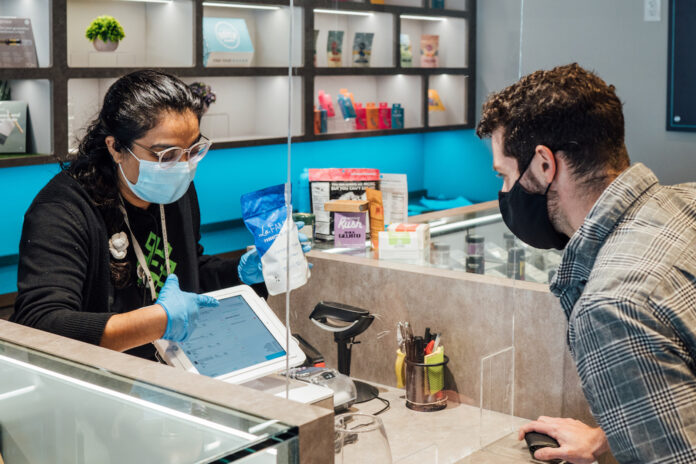
Targeting the right people along the supply chain, as opposed to focusing on the end user, is an essential part of gaining market share in a highly-competitive retail environment. When it comes to cannabis producers and manufacturers, if you’re not thinking about selling to budtenders, then your sales strategy is missing a critical component.
Industry data and market research company Brightfield Group recently conducted its second annual survey of hundreds of retail workers in Canada to determine “What Drives Budtenders.” The findings are based on comments from 482 budtenders who shared what they consider when recommending brands and products to customers, as well as what information brands can provide to help budtenders succeed in their roles.
“We found that budtenders are influencing more than 50 percent of people that walk into a dispensary,” said Bethany Gomez, managing director at Brightfield Group. “We talk to consumers about their brands [of choice], what they care about, and how they are making their decisions, and we just keep coming back to budtenders as one of the key drivers.”
According to Gomez, the data show budtenders are driving more than 35 percent of all purchases, which makes them a powerful group in the retail landscape.
As of 2022, approximately 46 percent of U.S. cannabis consumers had not yet identified a preferred brand. This creates a significant opportunity for companies to appeal to an untapped market.
“People think that you can just develop a partnership with a retailer, take your message and drill that down to the budtenders and they are just going to sell what you tell them to sell, like in a normal CPG space,” said Gomez. “Nobody gets into cannabis because they like doing what they’re told.”
And while budtenders are recommending brands on a daily basis, they are not necessarily recommending the brands they have been told to promote by corporate entities.
“Cannabis is such an evolving landscape,” said Gomez. “It’s on its way to being a CPG industry, it will get there eventually but it’s not there yet. “In the evolution of buying a baggie on the street to Coca-Cola, we’re kind of in inning four.”
For this study, Brightfield asked budtenders what brands they used for personal consumption, what brands they recommend to customers, and what brands they will not recommend to customers.
“Budtenders personally love premium brands, because they are heavy and experienced cannabis users,” said Gomez. “Less than 25 percent of people that walk into a dispensary want premium brands. So they have the brands they use themselves, and then a reliable set of mid-tier brands that nobody will ever complain about, that have a good value proposition. They make a lot of their decisions based on things like terpene profiles.”
How to influence budtenders effectively
Thankfully, there are ways to show budtenders the love they seek and subsequently get your product noticed in the crowded retail space.
First and foremost, samples are the best way for budtenders to try and hopefully recommend the brand. By sending them a sample to try, they now have the actual experience to go on, as opposed to whatever is printed on the package. With that in mind, it’s always important to show the best version of yourself. That could mean cherry-picking your best nugs for an eighth or finding out what types of terpenes your local budtenders prefer to ensure your sample product selection has the best chance of making a lasting impression.
Second, having a product rep show up to talk with them is also incredibly effective.
“You need to schedule it, and you need to make them remember you,” said Gomez. “You need a basic value proposition that they can easily talk to customers about, and answer some basic questions. There is far too much phoning it in right now.”
Gomez added that budtenders love brand reps, and the more those reps show that they care about the brand and the relationship, the more impact your brand will have.
“The number one thing that budtenders value is authenticity,” said Gomez.
Finally, a great way to encourage budtenders to work on your behalf is to ensure they understand and agree with your value proposition. That means giving them as much information about the product as possible so that when they recommend it, they clearly feel knowledgeable about the product and know exactly who would enjoy it.
“Customers are going to ask tough questions,” said Gomez. “If [the budtenders] don’t know the answers to them, that makes their job hard. You need to tell them something they’re going to remember about your brand but also have collateral. Have cheat sheets so they don’t have to remember.”
Gomez concluded by saying that it also never hurts to give out company swag, for example, a high-quality hoodie in a style they’ll actually want to wear.
“They [budtenders] are the most powerful people in cannabis yet they are not high-income,” said Gomez. “They like free stuff very much.”
Ultimately, budtenders are a key part of your sales team even if they’re not on your payroll. But if you begin to think of them and treat them like an extension of your company, you’ll increase your chances of getting them to provide the types of recommendations that can deliver new customers and drive consistent revenue for years to come.
